Dial up the flavor of your dishes with my homemade Crunchy Garlic Chili Oil (Taberu Rayu) recipe! This bold and umami-rich condiment is packed with crispy fried shallots, garlic chips, sesame seeds, and dried pepper flakes. Slightly sweet and mildly hot, it’s a versatile topping that’s delicious on steamed rice, noodles, fried eggs, salads, tofu, and more.
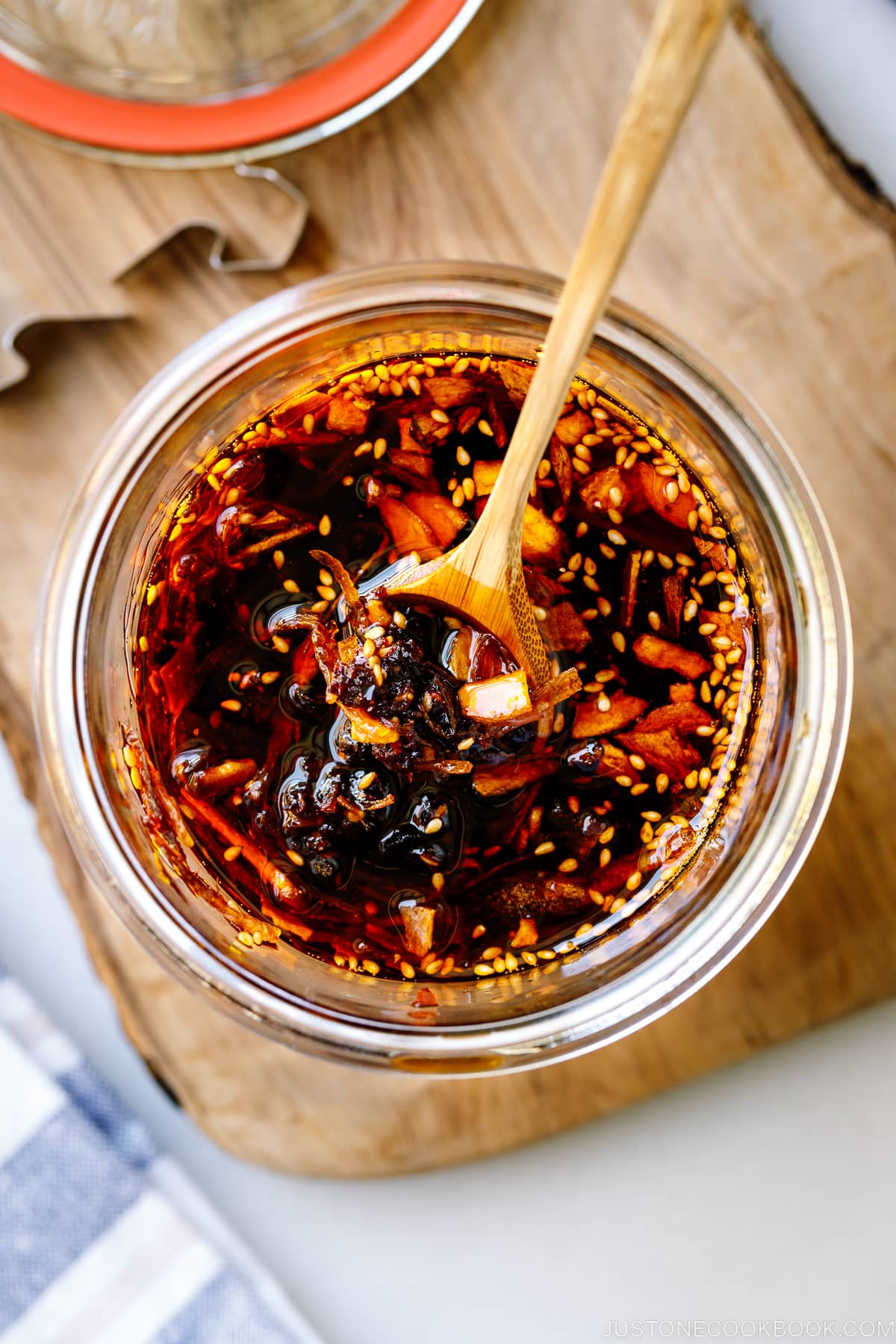
Can’t get enough of chili oil? Me too! Previously I’ve shared the classic Japanese chili oil, and now I’m back with another homemade chili oil recipe that is even bolder and, dare I say it, next level? Introducing Crunchy Garlic Chili Oil or Taberu Rayu (食べるラー油)!
This version is super fragrant, deeply savory, and is packed with crispy crunchy bits that are incredibly addictive. You’re going to want to put it on everything!
Table of Contents
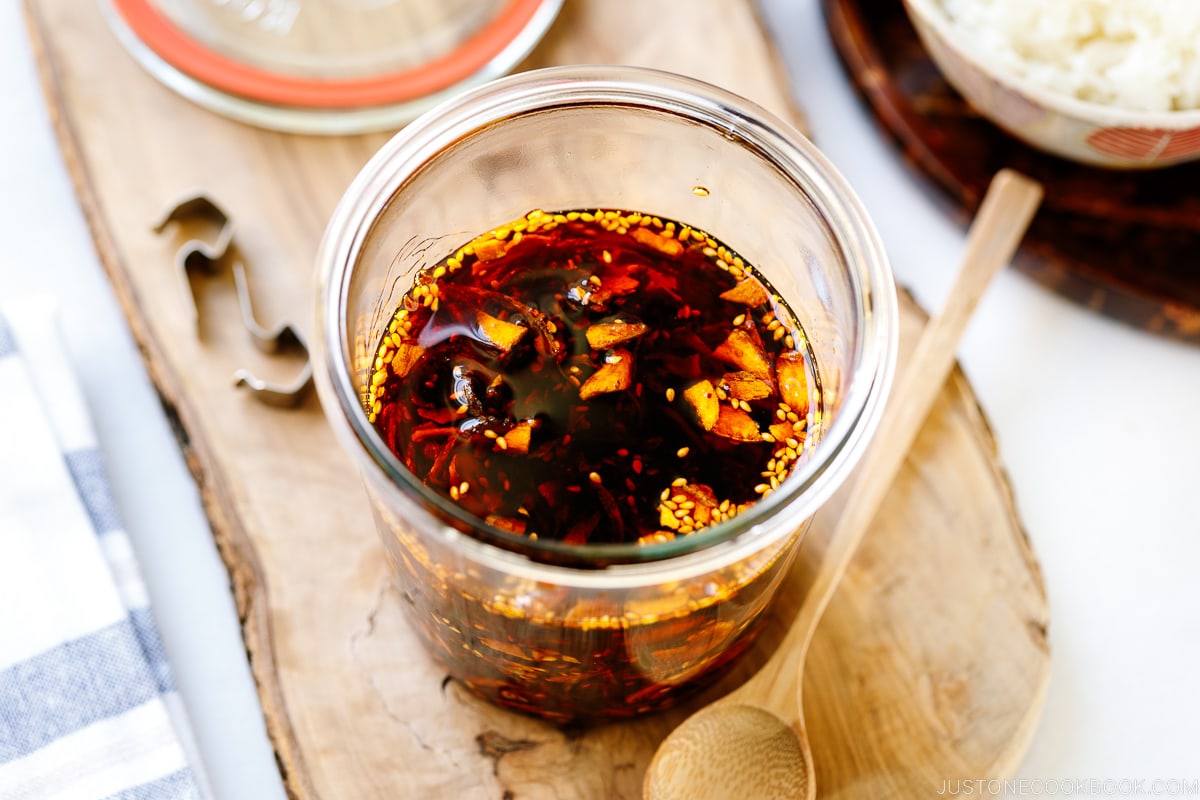
What is Taberu Rayu?
Taberu rayu (食べるラー油), literally meaning “chili oil for eating,” has been around for over a decade in Japan. As you already know, Japanese cuisine does not particularly offer many spicy dishes. The tolerance for spicy food for the general Japanese public is pretty low, hence, we tend to adapt and tone down the level of spice of any foreign-influenced dishes. So, I still remember when this chili oil condiment became a big sensation in 2009. It was a huge change in our diet!
You can probably find two brands of taberu rayu: Momoya brand and S&B brand, both of which are vegetarian. In Japan, some taberu rayu contain seafood such as dried shrimp, squid, and scallops. I kept mine vegetarian/vegan-friendly, but you’ll find my dried seafood suggestions in the recipe card below if you’d like to amplify the savory and umami flavors.
This homemade condiment is pretty close to the store-bought condiment. With the use of gochugaru (Korean pepper flakes), this taberu rayu is hot with a slight hint of sweetness. It has a nice crunch from the garlic chips and sesame seeds and an interesting textural component from the gochujang (Korean chili paste). Look at the beautiful bright red color of the chili oil!
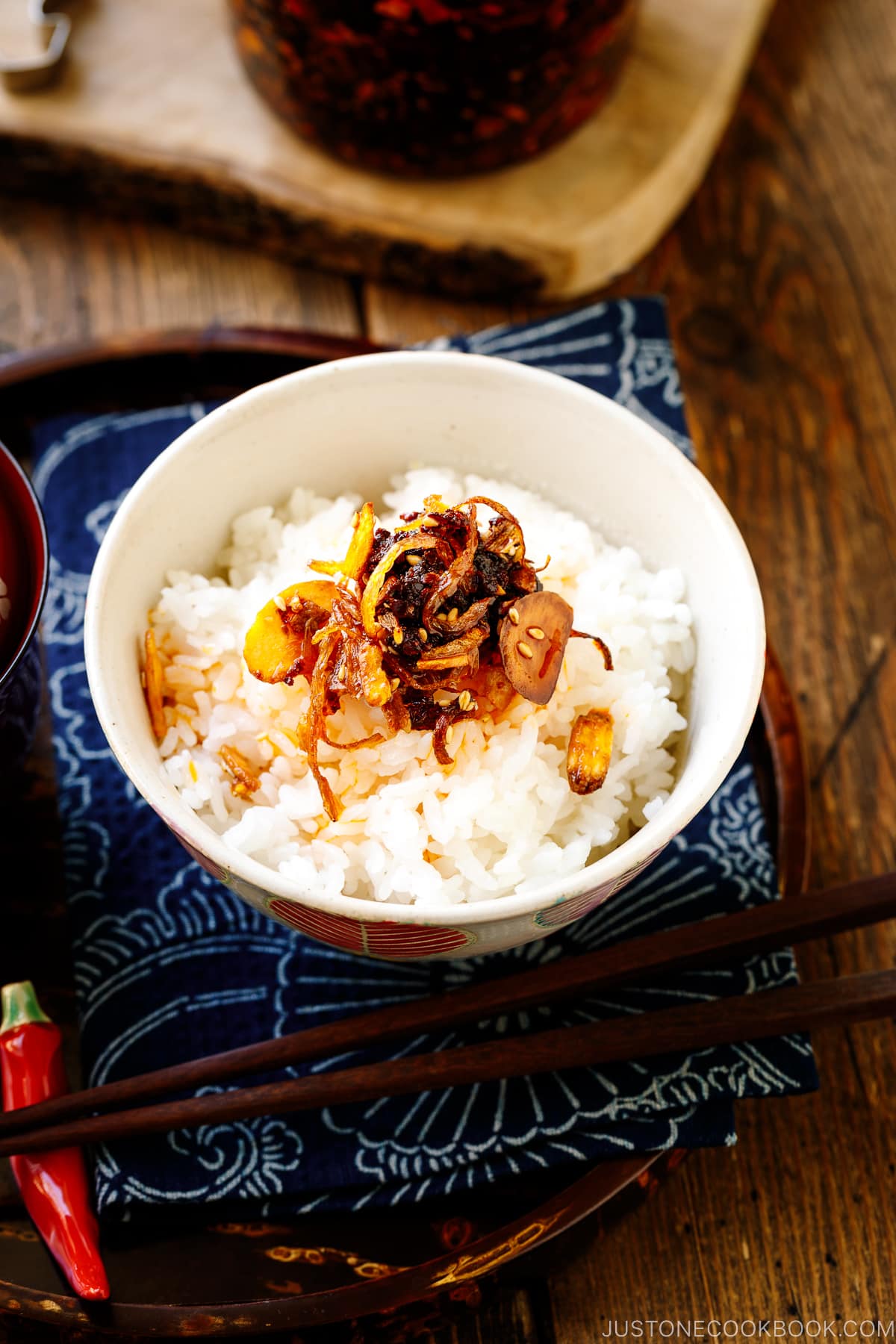
How to Make Taberu Rayu
The Ingredients You’ll Need
- Garlic – Find an oversized garlic bulb that‘s about 2.75” in diameter; also called colossal garlic.
- Shallot
- Neutral oil – Not sure what is neutral oil? Any of these types will work.
- Sesame oil
- Korean pepper flakes (gochugaru) – Why didn’t use o we use ichimi togarashi (Japanese chili pepper)? Taberu rayu actually uses Korean pepper flakes because they are not as spicy. You can get gochugaru on Amazon or in Asian grocery stores.
- Toasted white sesame seeds
- Salt
- Sugar
- Korean chili paste (gochujang) – Despite its fiery red color, it has a balance of sweet, savory, and spicy flavors. You can get it on Amazon or in Asian grocery stores.
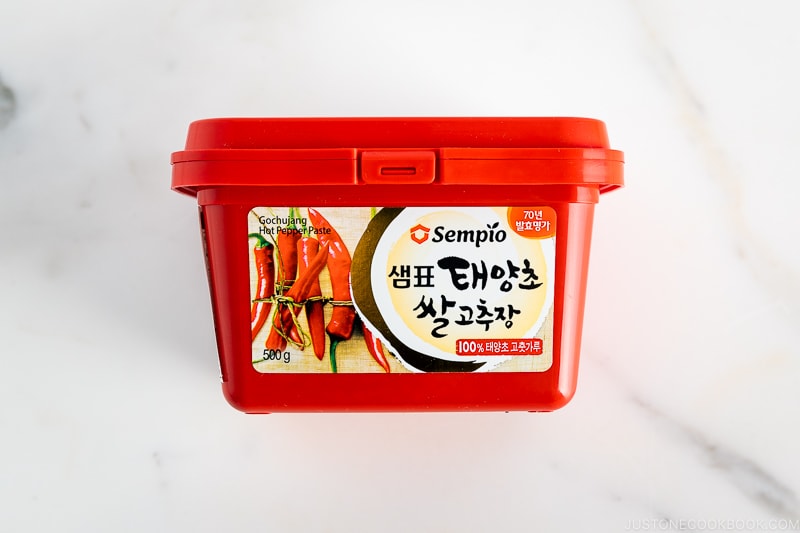
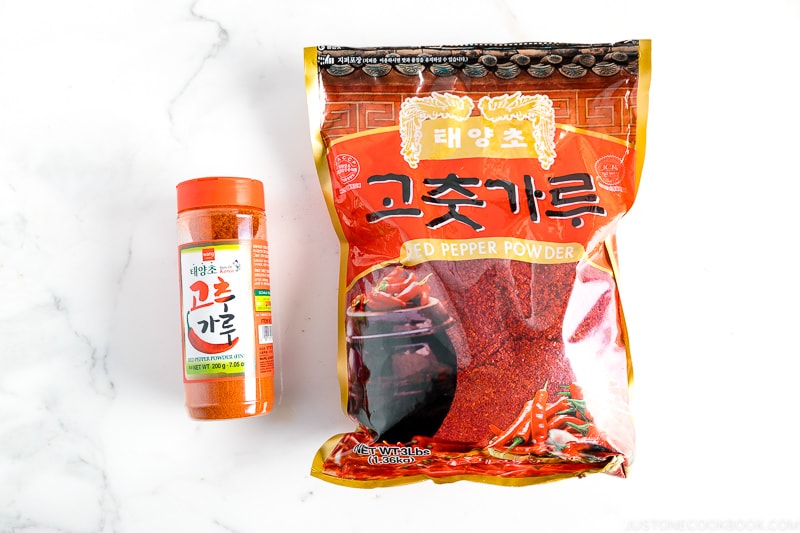
The Cooking Steps
- Make fried garlic chips and fried shallots. Shallow fry the thin-sliced garlic cloves and shallots. Once drained well, break into smaller pieces.
- Heat neutral oil and sesame oil in the wok or frying pan.
- Pour the hot oil into a heat-resistant glass bowl containing Korean chili pepper and sesame seeds.
- Add the Korean chili paste, salt, and sugar, and mix it all together.
- Pour the mixture into a resealable jar that contains fried garlic chips and fried shallots. Mix it all up and enjoy!
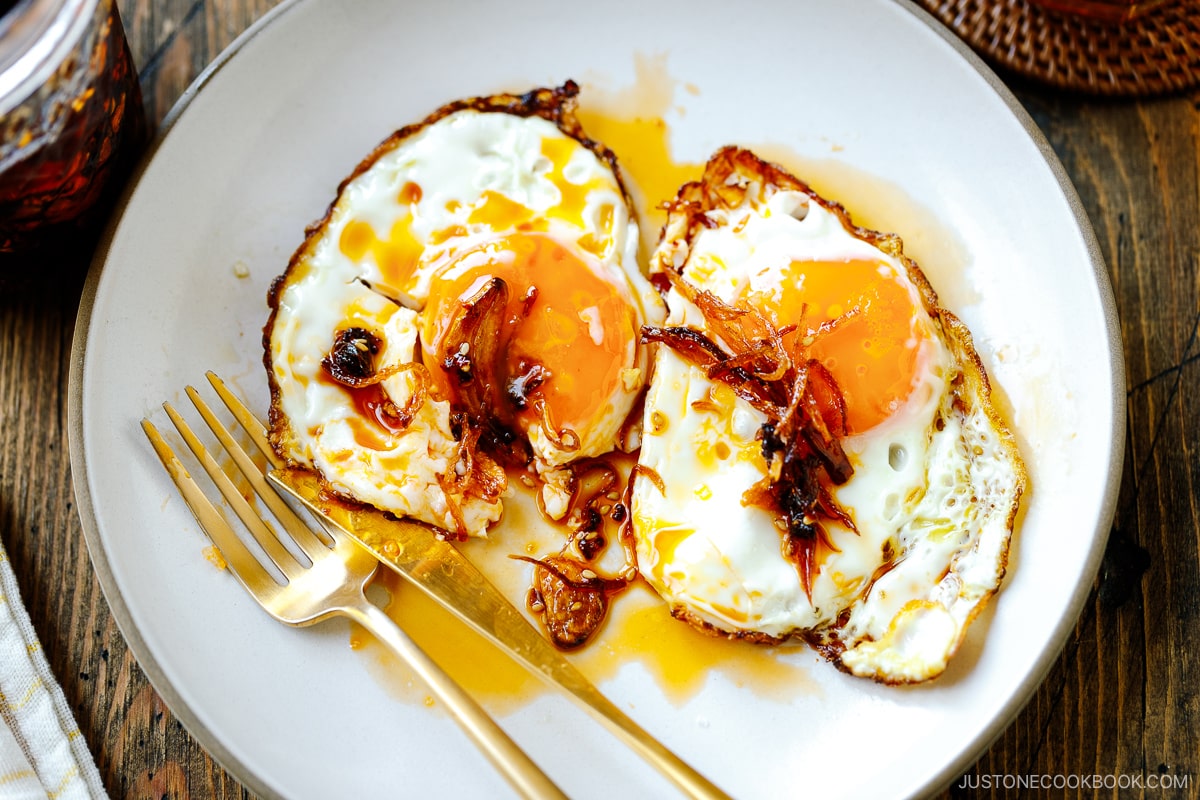
Substitution Tips
- Korean pepper flakes (gochugaru) – You can substitute them with ichimi togarashi or crushed red pepper but please remember that they are both much spicier than Korean chili flakes.
- Korean chili paste (gochujang) – The chili paste has unique spiciness and sweetness. If you can’t find it, you can use miso instead, but it won’t have the same taste.
- Shallot – You can substitute it with regular onion if you can’t find it. Shallots have a delicate and sweet flavor with a hint of sharpness, while onions bring a more intense heat.
Recipe Tips and Techniques
- If you want to save time or avoid frying altogether, you can purchase garlic chips and fried shallots online. Or, you can pour hot oil over minced raw garlic and shallot. The latter method won’t yield a crunchy texture, but you still get the aromatics.
- Remember to take out fried shallot and garlic when they are LIGHTLY golden brown. Don’t wait until “perfectly golden brown” because the remaining heat will continue to brown them.
- Use a wok or saucepan to heat the oil. Transferring the hot oil into a bowl is much easier with a wok or saucepan than a frying pan.
- The oil should be heated to 340-350ºF (170-180ºC). If you don’t have a kitchen thermometer, you can scoop oil with a spoon and pour in the chili pepper to see if it sizzles. If it does, the oil is ready!
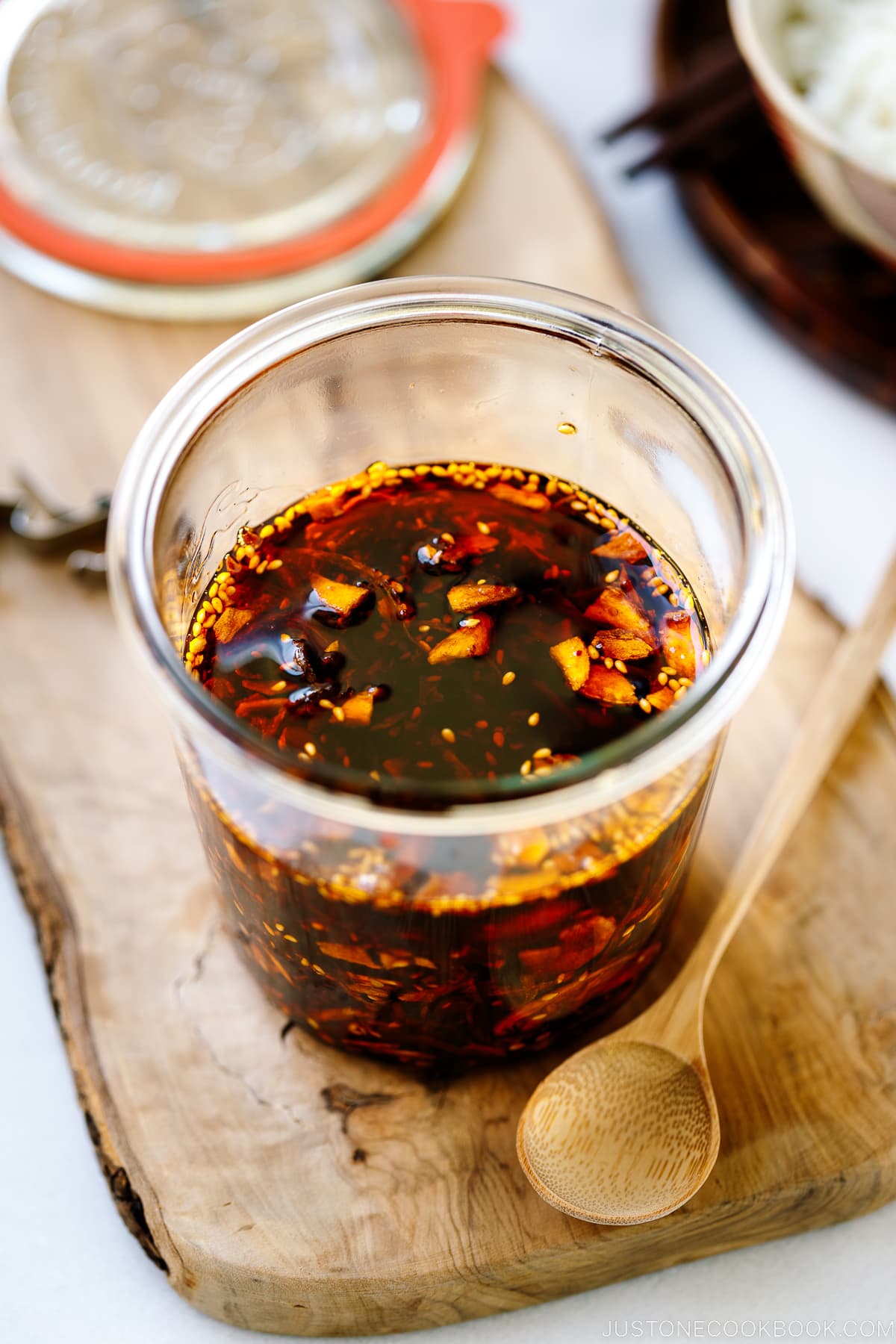
Make Other Variations
- Add dried shrimp for extra umami. In Japan, it’s common to add sakura ebi (桜えび) in taberu rayu. Put it in the bowl with Korean chili flakes and sesame seeds.
- Add nuts for crunch. You can add crushed peanuts or almonds.
- Add dried red chili peppers for more heat. You can add it to the oil while heating it up.
- Add aromatics for more flavors. You can add ginger and the green part of the green onions to the oil.
- Add soy sauce for a hint of familiarity. Japanese people like to add a little bit of soy sauce to a dish to add familiarity and comfort.
Storage Tips
Taberu rayu should be refrigerated in an airtight container for up to 1 month. Make sure there is no water content in the chili oil because water and moisture are the leading cause for the chili oil to go bad or rancid and bacteria may grow.
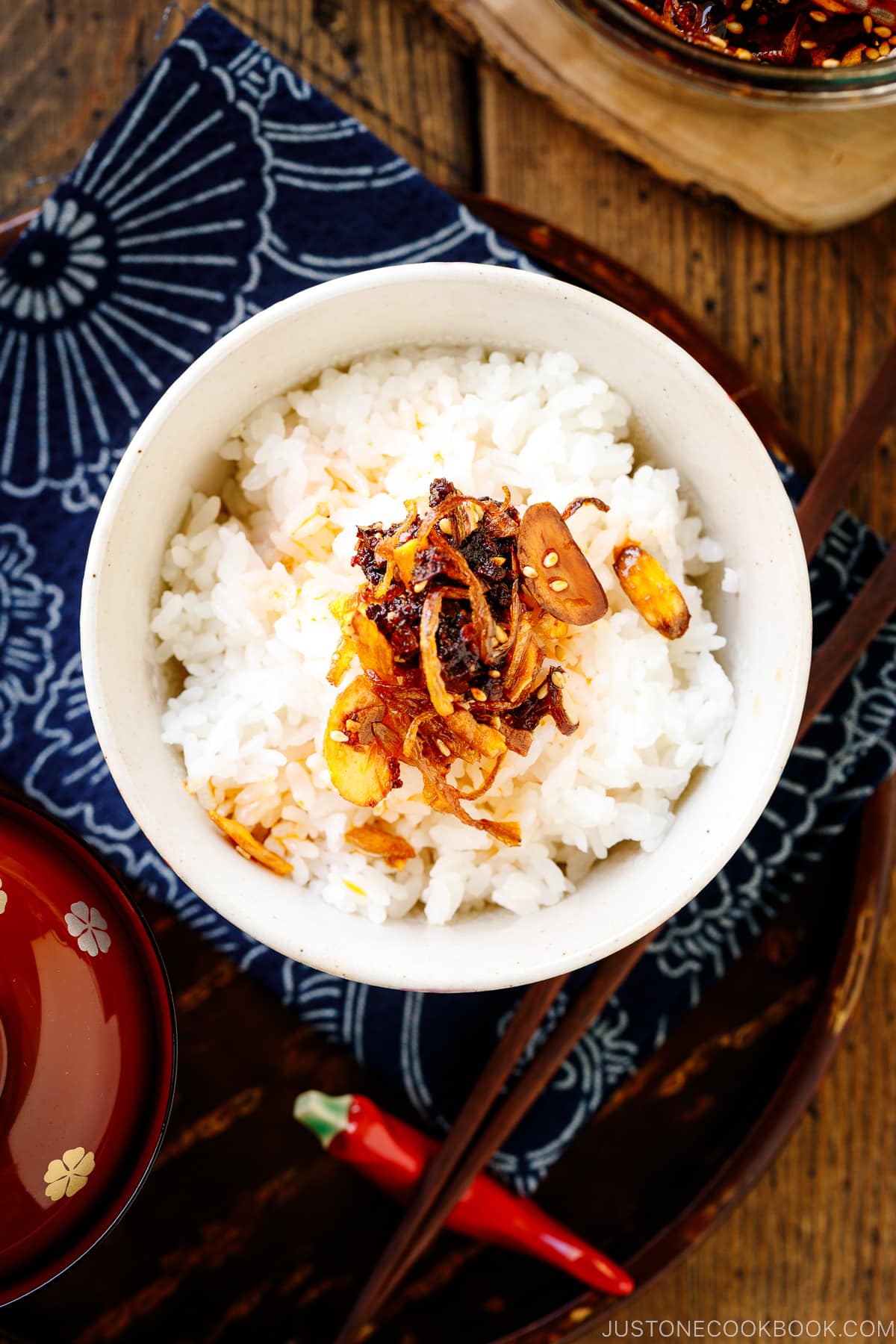
Ways to Use Crunchy Garlic Chili Oil (Taberu Rayu)
- Put on steamed rice and enjoy. The classic way!
- Mix together. Mix with stir-fried veggies or mushrooms, make Rice Balls (Onigiri) and fried rice, or use it as a topping for Rice Porridge (Okayu).
- Drizzle! Gyoza, sliced avocado, fried eggs, Cold Tofu (Hiyayakko), Hot Tofu (Yudofu), Fried Chicken (Karaage), grilled vegetables, fresh cucumbers, and pretty much anything!
- Add to your favorite noodles and pasta! A great addition to ramen, udon, and soba noodle soup, or cold noodles. Also, don’t forget to check out my daughter’s favorite, Japanese-style Pasta with Shrimp and Broccolini.
- Add to salads, especially Chilled Shabu Shabu Salad!
- Mix into natto (納豆).
- Add a spoonful to Greek yogurt for a fantastic dip!
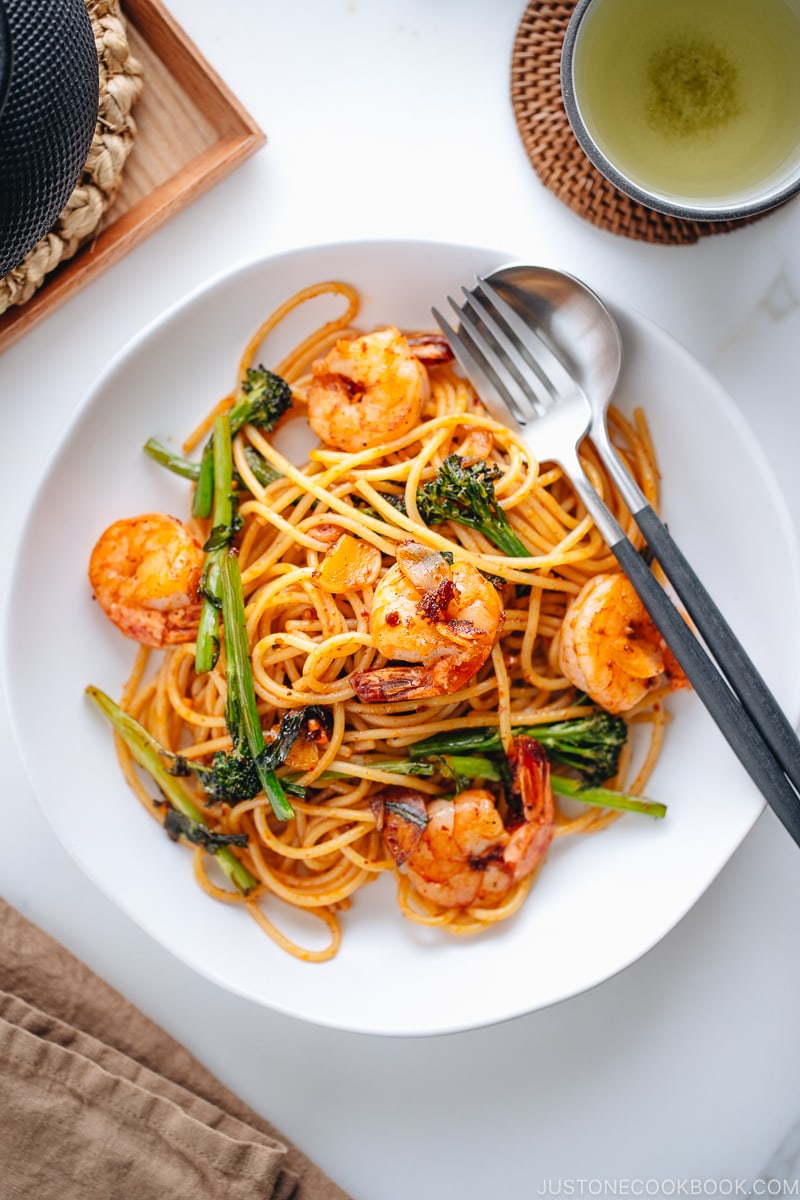
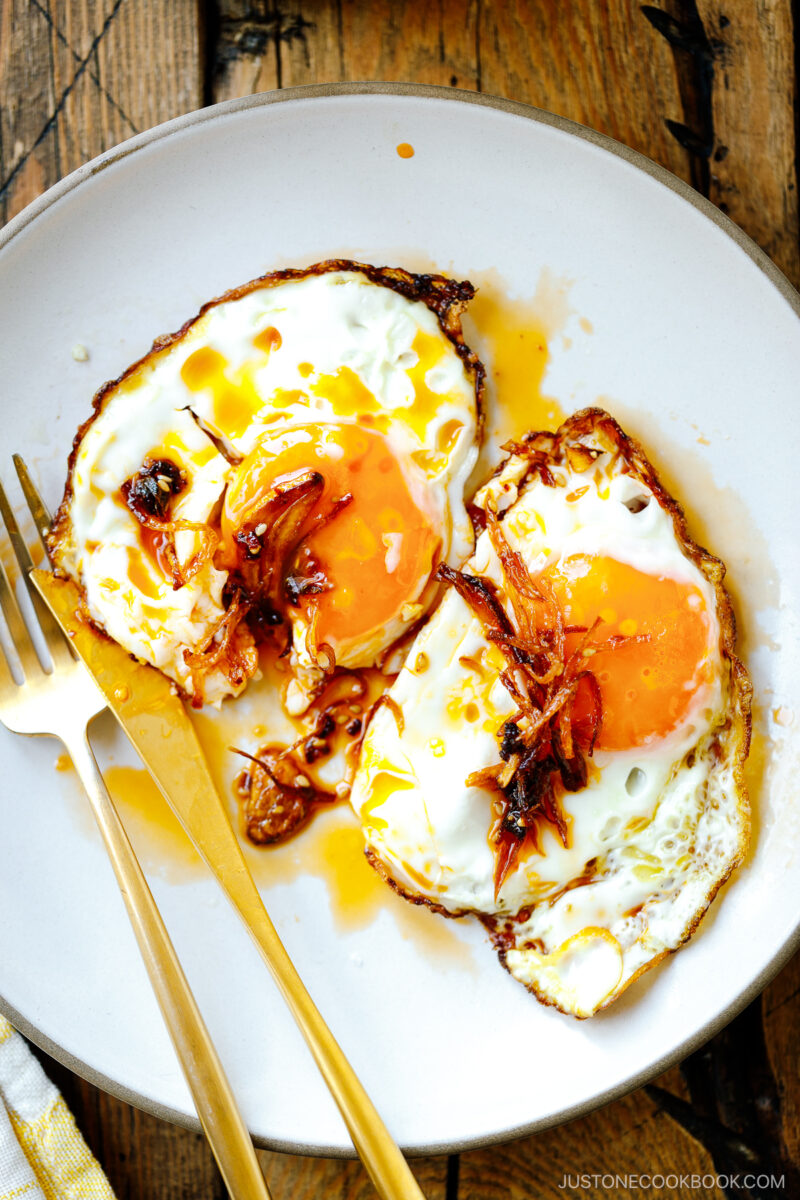
Recommended Tools to Make This Recipe
- Mason jars or Weck jars
- Wok (I use a 10″ carbon steel wok; use discount code “JOC10” for 10% off) or stainless steel saucepan
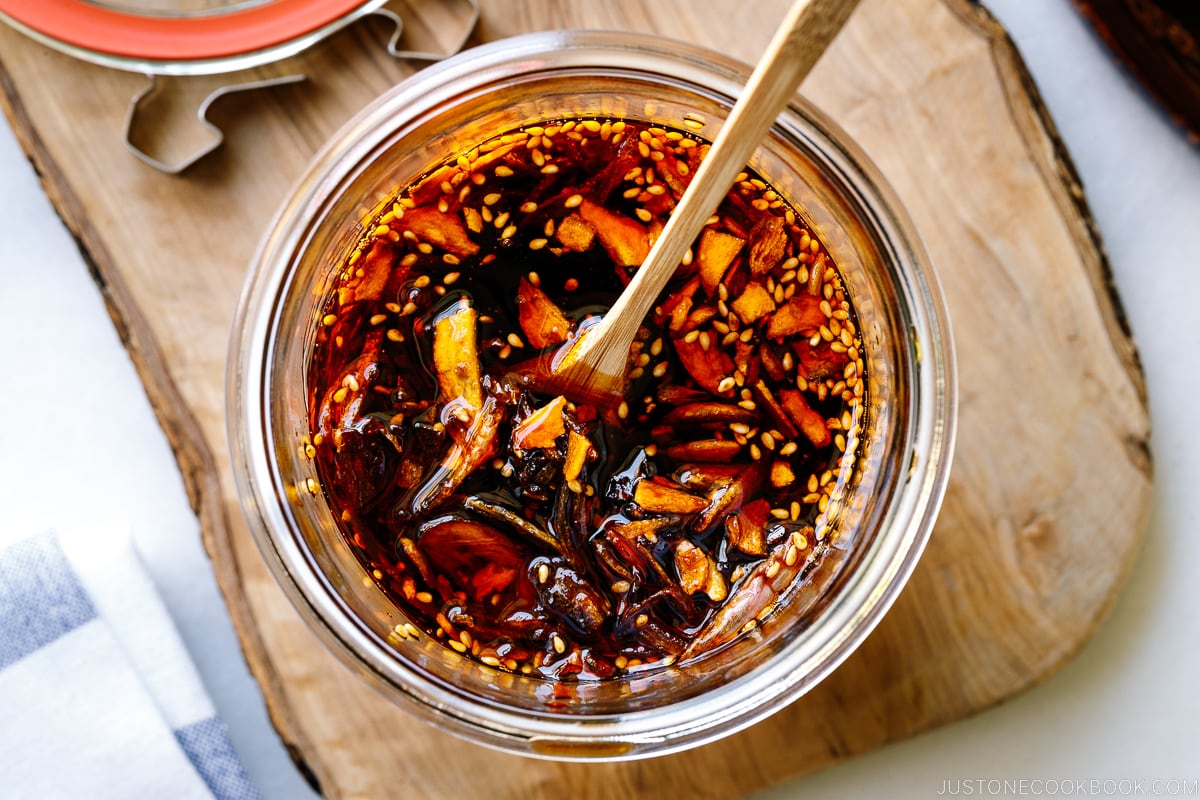
Wish to learn more about Japanese cooking? Sign up for our free newsletter to receive cooking tips & recipe updates! And stay in touch with me on Facebook, Pinterest, YouTube, and Instagram.
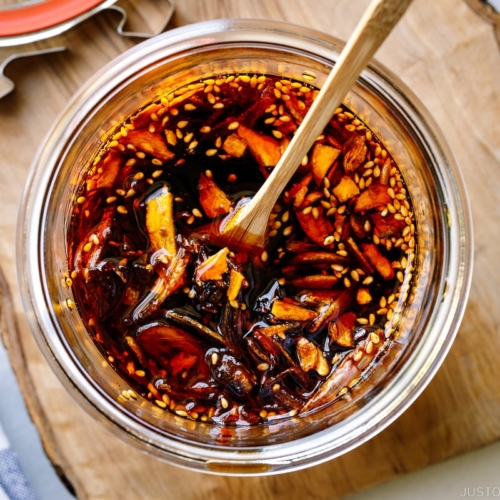
Crunchy Garlic Chili Oil (Taberu Rayu)
Ingredients
For the Fried Shallot and Garlic Chips
- 1 shallot (1¾ oz, 50 g; or substitute ¼ small onion)
- 6 cloves garlic (1¾ oz, 50 g; find an oversized garlic bulb that‘s about 2.75” in diameter; also called colossal garlic)
- ⅓ cup neutral oil (I used untoasted sesame oil)
For the Chili and Oil Mixtures
- 3 Tbsp gochugaru (Korean pepper flakes) (coarse; you can buy it on Amazon)
- 1 Tbsp toasted white sesame seeds
- ½ cup neutral oil (I used sunflower oil)
- ½ cup toasted sesame oil
- ½ tsp Diamond Crystal kosher salt
- 1 tsp sugar
- 1½ Tbsp gochujang (Korean chili paste) (you can buy it on Amazon)
For the Optional Add-Ins
- 1 oz dried shrimp (or use dried squid or dried scallop)
- 1 oz nuts (crushed peanuts or sliced almonds work well)
- ichimi togarashi (Japanese chili pepper) (if you like it very spicy; available on Amazon)
- 1–2 slices ginger
- 1 green onion (the green part only)
- soy sauce (a few drops)
Instructions
- Gather all the ingredients. Use the outer large cloves of a colossal or very large garlic bulb.

To Fry the Garlic and Shallot
- Thinly slice 1 shallot lengthwise.

- Peel 6 cloves garlic without crushing them. Then, cut the cloves lengthwise into thin, uniform slices.

- Set a wok (I use this 10" carbon steel wok; use “JOC10“ for a 10% discount) or stainless steel saucepan on medium-low heat and add ⅓ cup neutral oil and the shallot slices. Bring the oil up to temperature while you spread the shallot slices around the pan in a single layer using a fine-mesh skimmer spoon or a slotted spoon. Because shallots contain a lot of moisture (which causes the oil to bubble from evaporation), it can take awhile to fry and crisp up.

- Once the bubbling subsides, the shallot slices will slightly sizzle while cooking. Once they look lightly golden brown, remove them with the fine-mesh skimmer and drain the oil. Then, transfer them to a paper towel-lined plate or tray to absorb any excess oil. Set aside. Tip: Take out the shallots sooner than you think. Don‘t wait until they are perfectly golden brown. The remaining oil will continue to brown the shallots.

- In the same oil in the wok over medium-low heat, add the garlic slices. Bring up to temperature and cook the garlic slices until they are lightly golden brown, flipping halfway. Tip: Make sure your stove‘s heat is not too strong, as the garlic will burn if the heat is too high.

- When the garlic slices are lightly golden, transfer to the paper towel-lined plate in a single layer and place another sheet of paper towel on top to absorb any excess oil. Let cool completely. Tip: Reserve the shallot- and garlic-infused oil for cooking other food.

- Once the fried shallots are cool, cut them into smaller pieces with a pair of kitchen scissors.

- Put the fried garlic chips in a bag and crush them with your hands or between your fingers.

To Make the Gochugaru and Oil Mixtures
- First, make the gochugaru mixture: In a heatproof bowl, combine 3 Tbsp gochugaru (Korean pepper flakes) and 1 Tbsp toasted white sesame seeds and set aside. (Add the optional 1 oz dried shrimp and/or 1 oz nuts now, if using.)Next, make the oil mixture: To a wok or stainless steel saucepan, add ½ cup neutral oil and ½ cup toasted sesame oil. I don‘t recommend using a frying pan, as it‘s harder to pour hot oil into a bowl. (Add the optional ichimi togarashi (Japanese chili pepper), 1–2 slices ginger, and/or green part of 1 green onion now, if using.)

- Heat the oil mixture to 340–350°F (170–180°C) and remove from the heat. (Discard the ginger and green onion, if using.) Tip: If you don‘t have a kitchen thermometer, scoop hot oil using a spoon and pour it onto the gochugaru mixture. If it sizzles, the oil is at the right temperature.

- Pour the hot oil mixture over the gochugaru mixture (it will sizzle). Stir well to distribute the hot oil throughout the mixture.

- Add ½ tsp Diamond Crystal kosher salt, 1 tsp sugar, and 1½ Tbsp gochujang (Korean chili paste) to the oil mixture. Mix well and let cool, for about 30 minutes or until the bowl is cool enough to touch. (Add the optional soy sauce now and remove the ginger and green onion, if using.)

To Assemble the Taberu Rayu
- Add the fried shallots and garlic chips to a clean, sterilized jar. Tip: To sterilize the jar (and the lid and ring), place them in boiling water for 10 minutes and make sure they are completely submerged.

- Next, add the chili oil mixture to the jar. Tip: Transfer the gochujang mass first, so it won‘t splash in the oil at the end.

- Stir to combine well with the fried shallots and garlic chips. Your Taberu Rayu is now ready to use.

To Serve
- Enjoy Taberu Rayu the classic way on steamed rice, or try it in Onigiri and on Japanese Rice Porridge (Okayu). Drizzle it onto Gyoza, sliced avocado, fresh cucumbers, fried eggs, and Japanese Fried Chicken (Karaage). Taberu Rayu is also delicious as a topping for Cold Tofu (Hiyayakko) and Hot Tofu (Yudofu) or mixed into natto (納豆). Try it in your favorite hot bowl of ramen, udon, and soba noodle soup or on cold noodles. Mix it into boiled pasta, Fried Rice, and stir-fries for texture and a savory flavor. It‘s also delicious on salad, especially chilled Shabu Shabu Salad!

To Store
- Store the Taberu Rayu in a clean glass jar for up to 1 month in the refrigerator. Chili oil can go bad and should be discarded if it has a rancid smell or a very unpleasant flavor.
Nutrition
Editor’s Note: This post was originally published on July 28, 2023. It’s been republished on October 2, 2023.
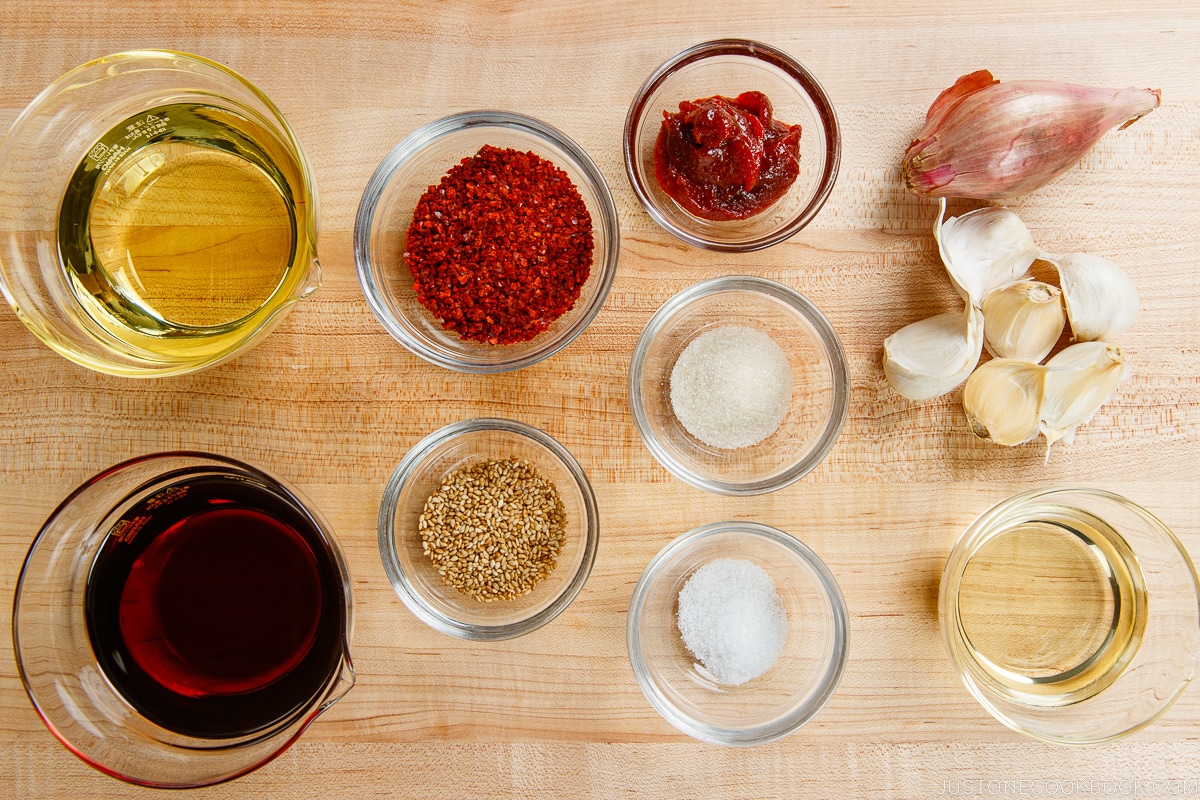
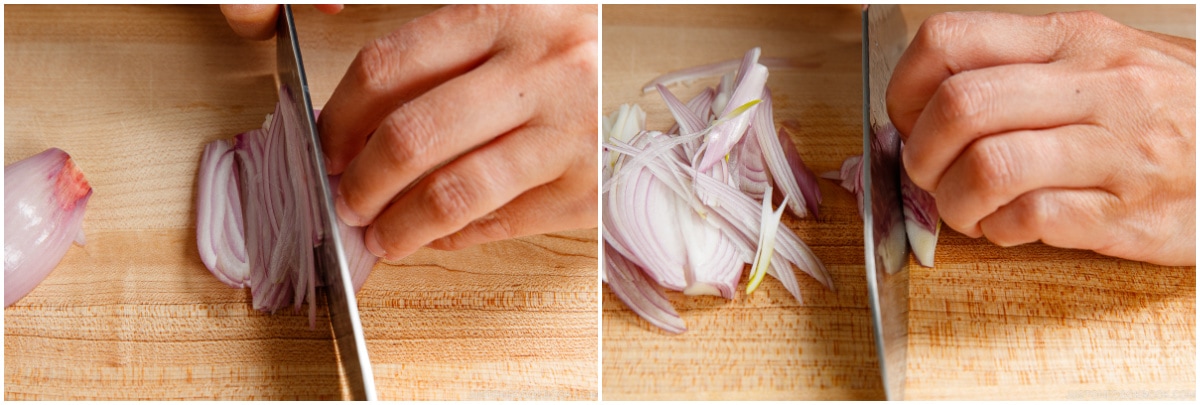
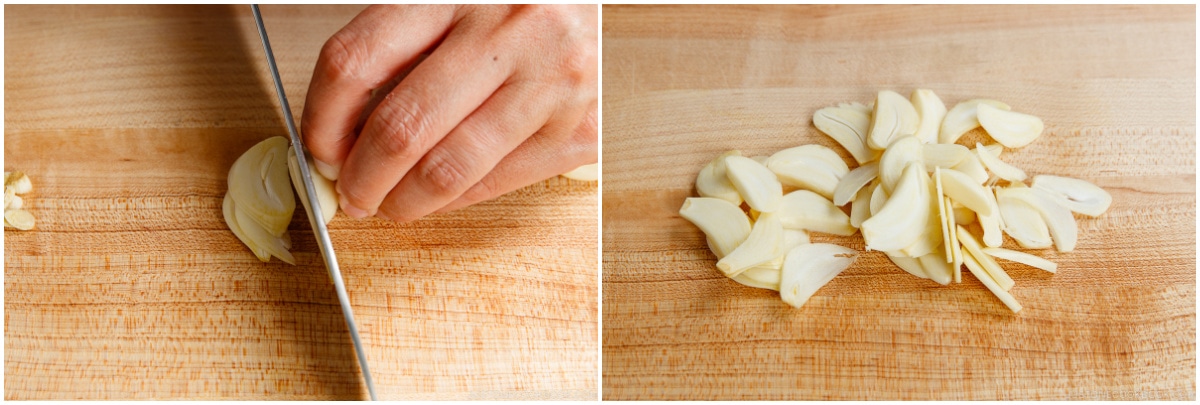
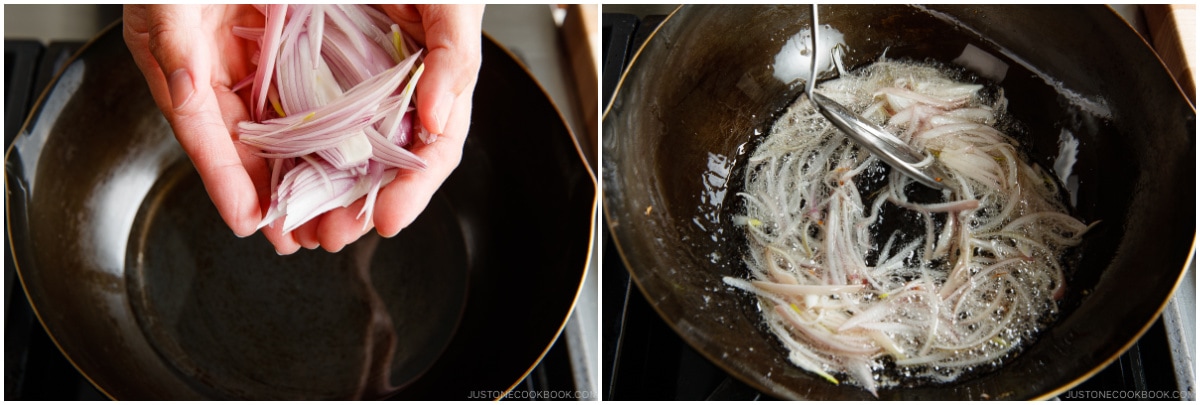
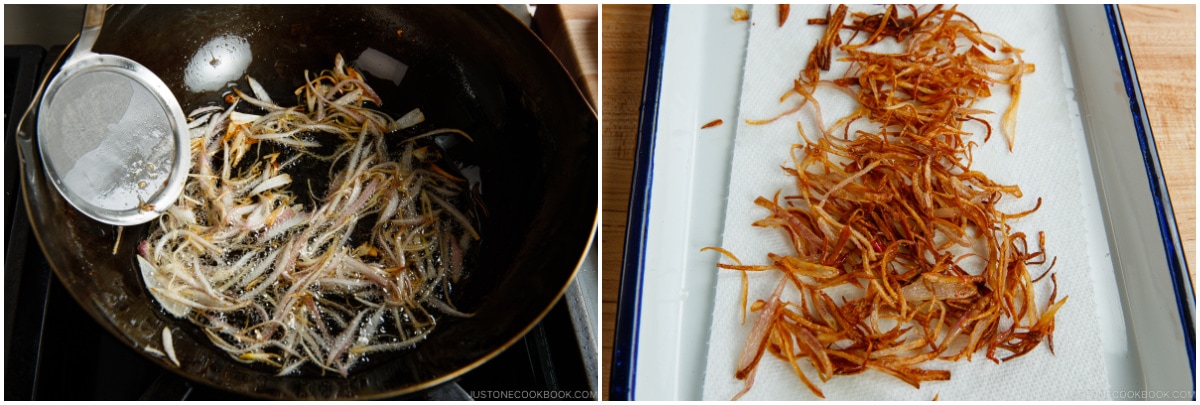
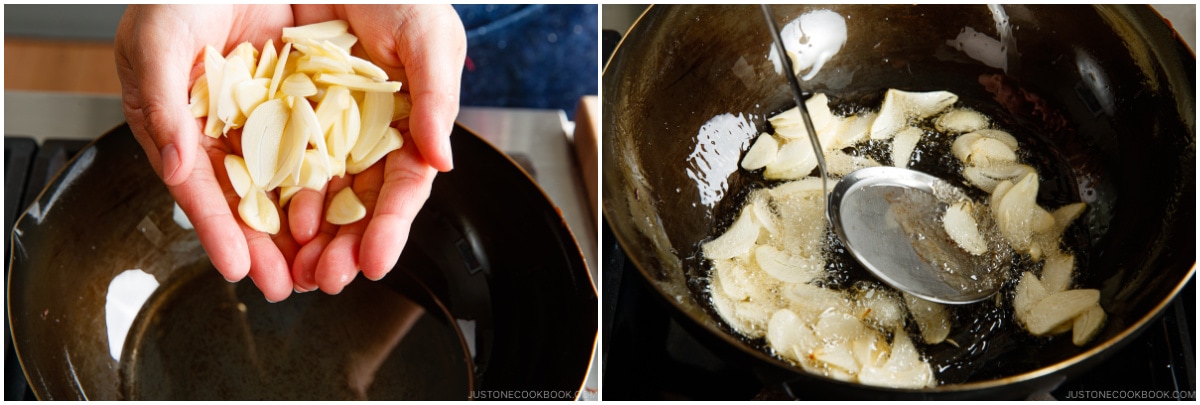
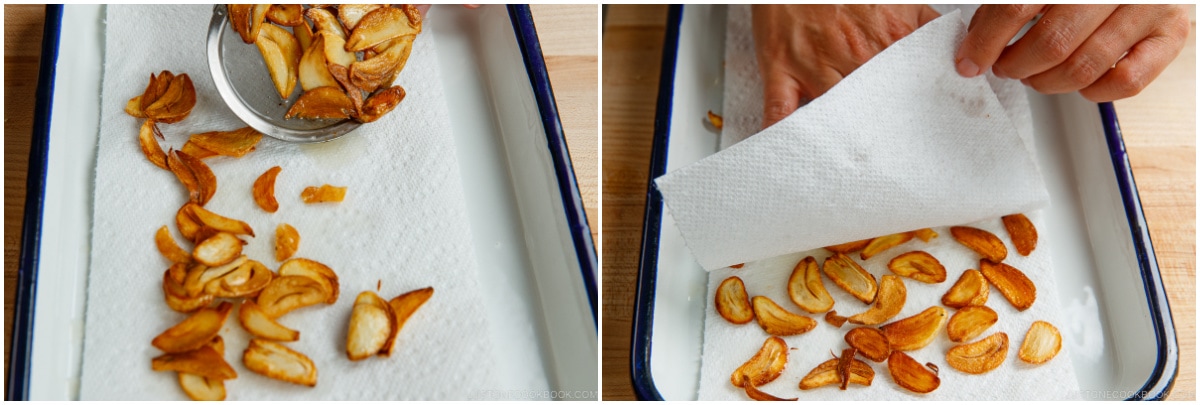
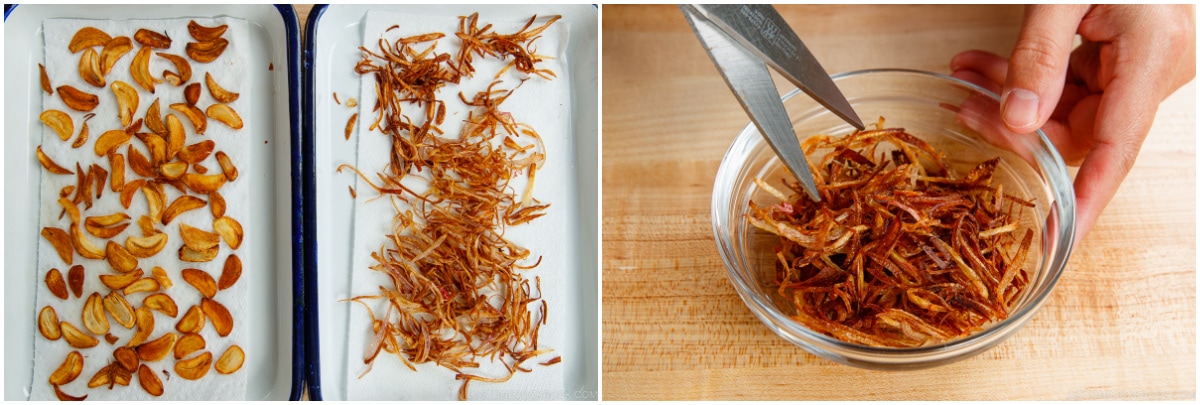
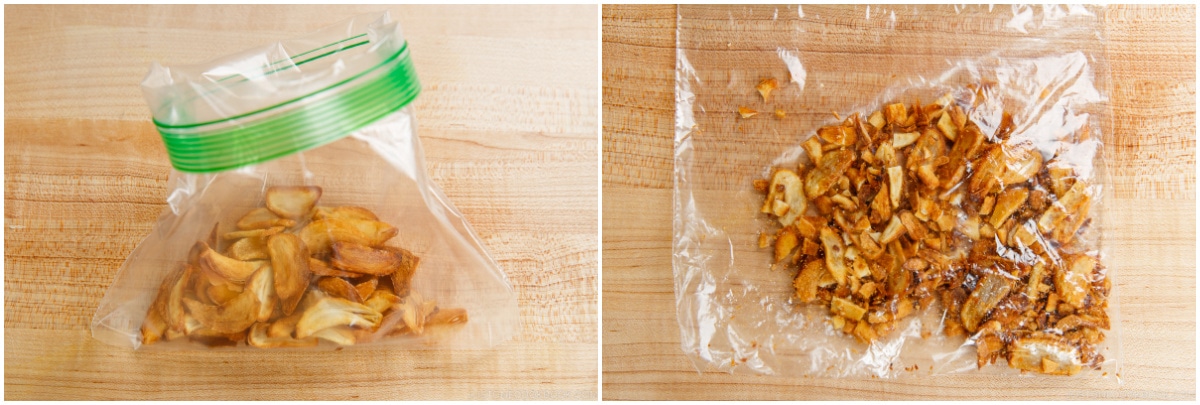
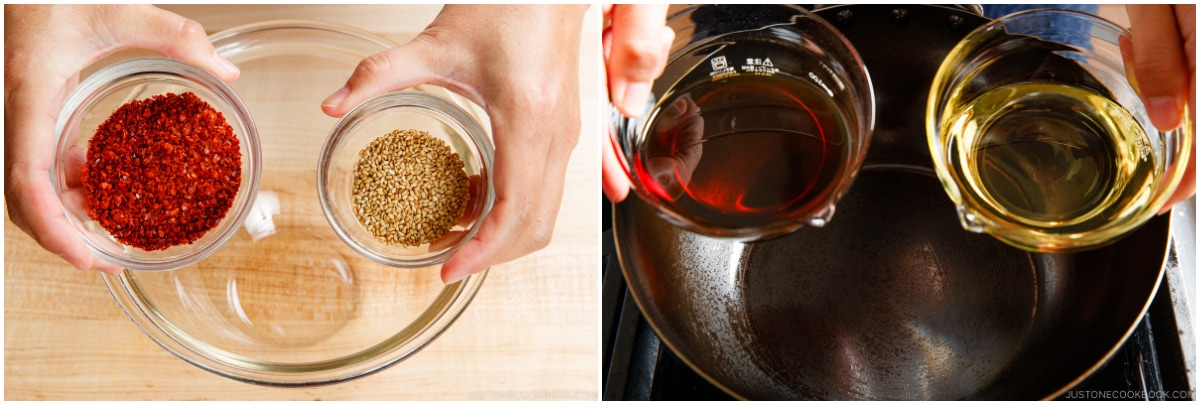
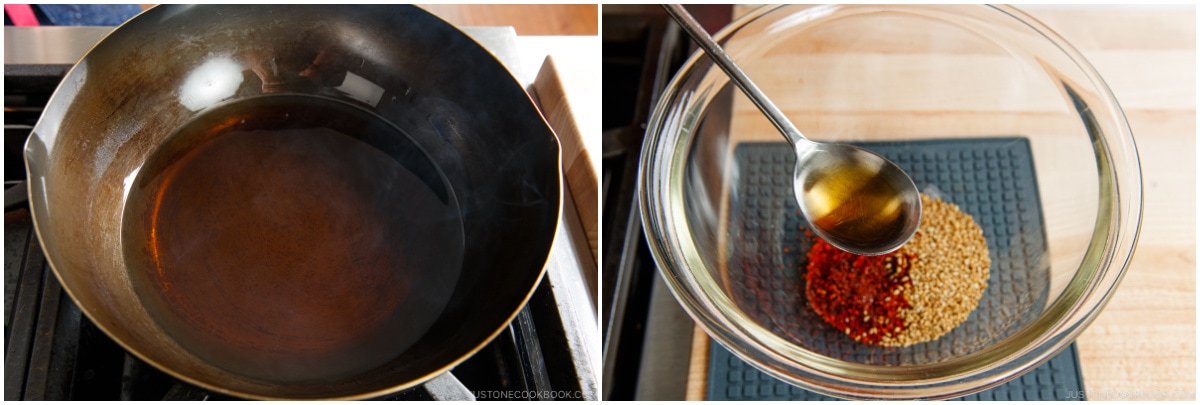
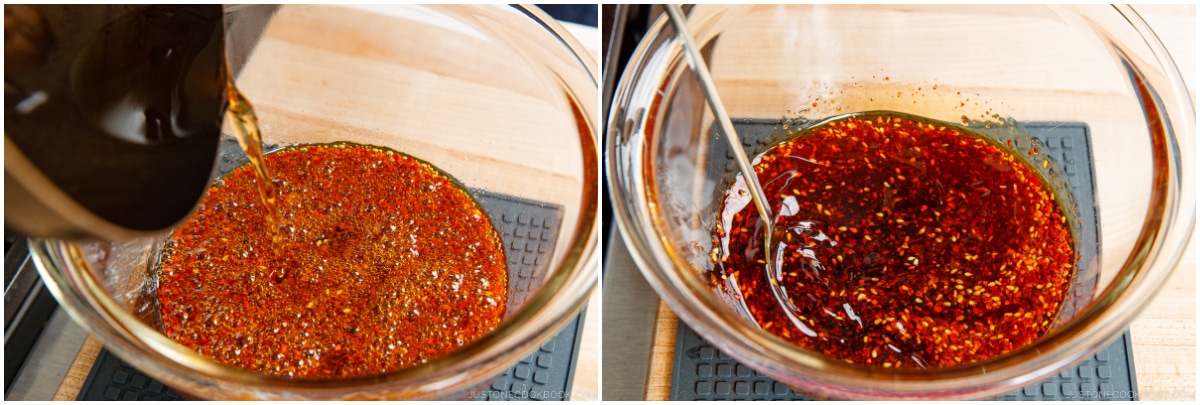
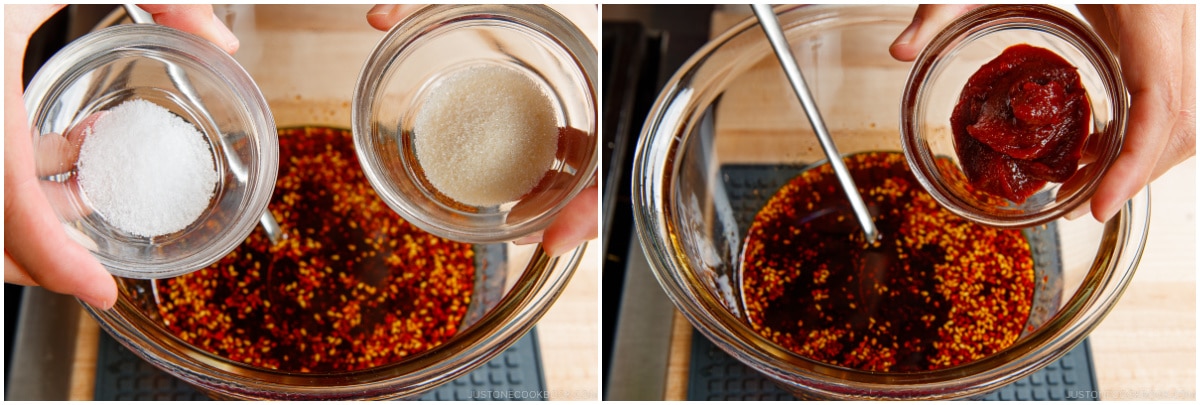
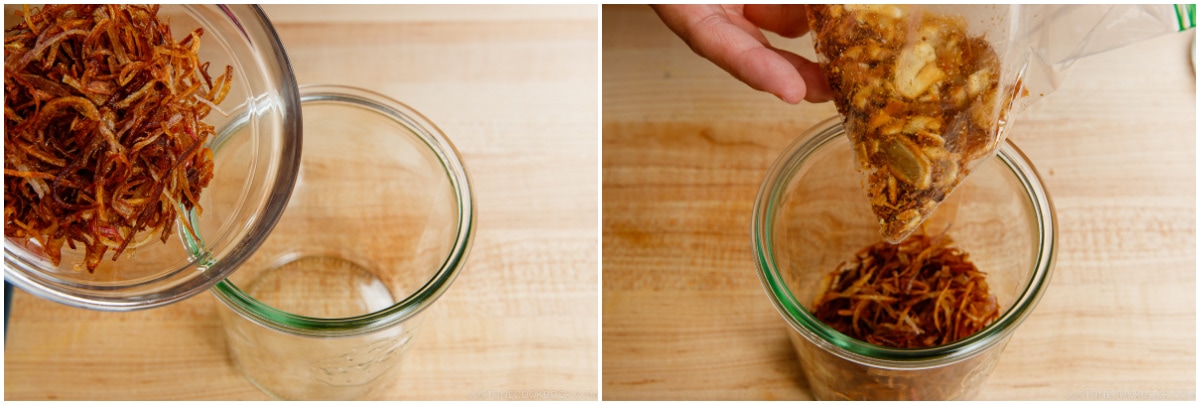
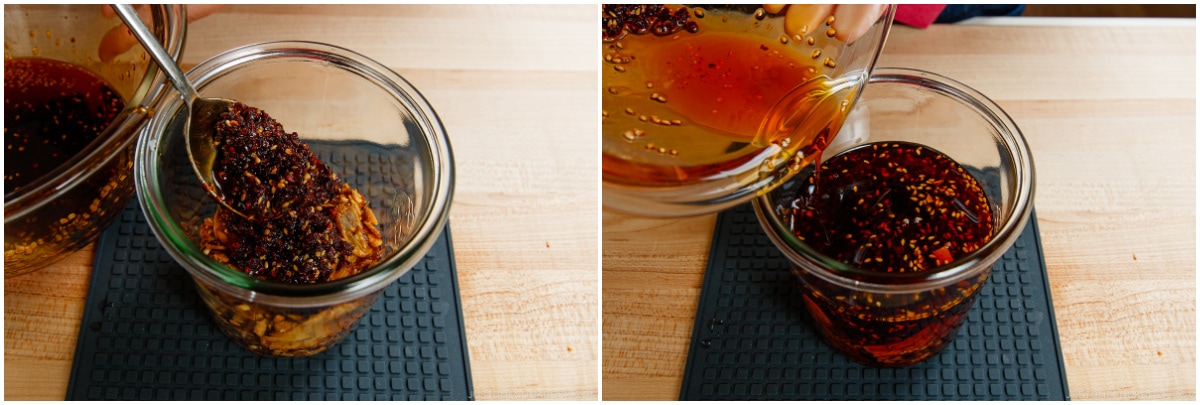
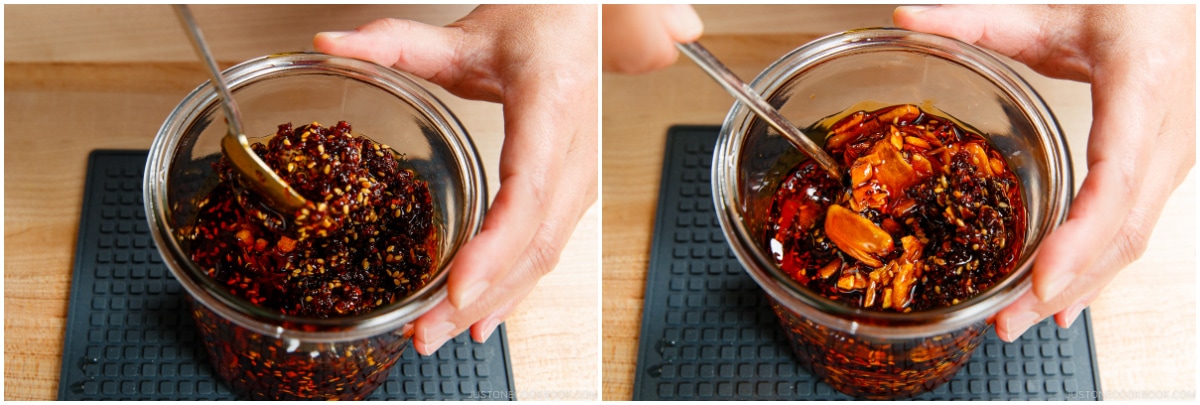










Hi, I LOVE this! I can only find the Gochugaru as powder (ground), it is hard to find as flakes in Australia. Will it be the same? Thank you so much for putting this recipe out there.
arama! I didn’t realize たべら was short for 食べるラー油! It all makes sense now lol ありがとう
Hi Sarabeth! ありがとう!
We hope you enjoy this with your meal. ☺️
Im so lucky to had your recipe. Nami san, arigato gozaimasu.
God Bless
Aww, thank you Jaime! Hope you enjoy this recipe! 🙂